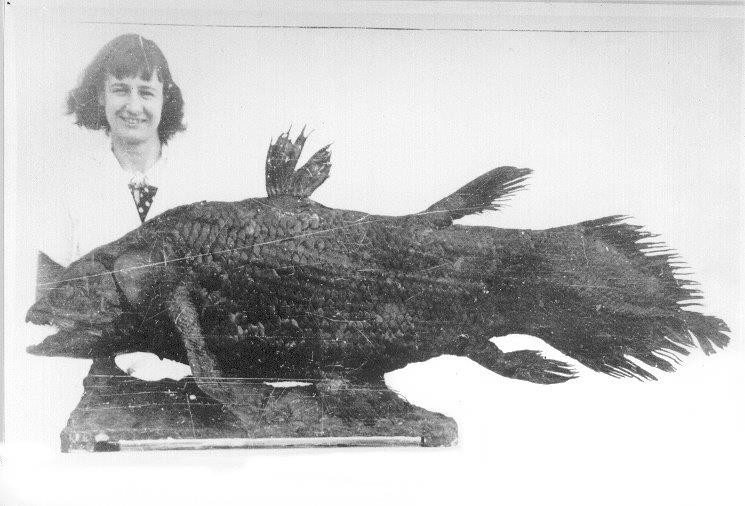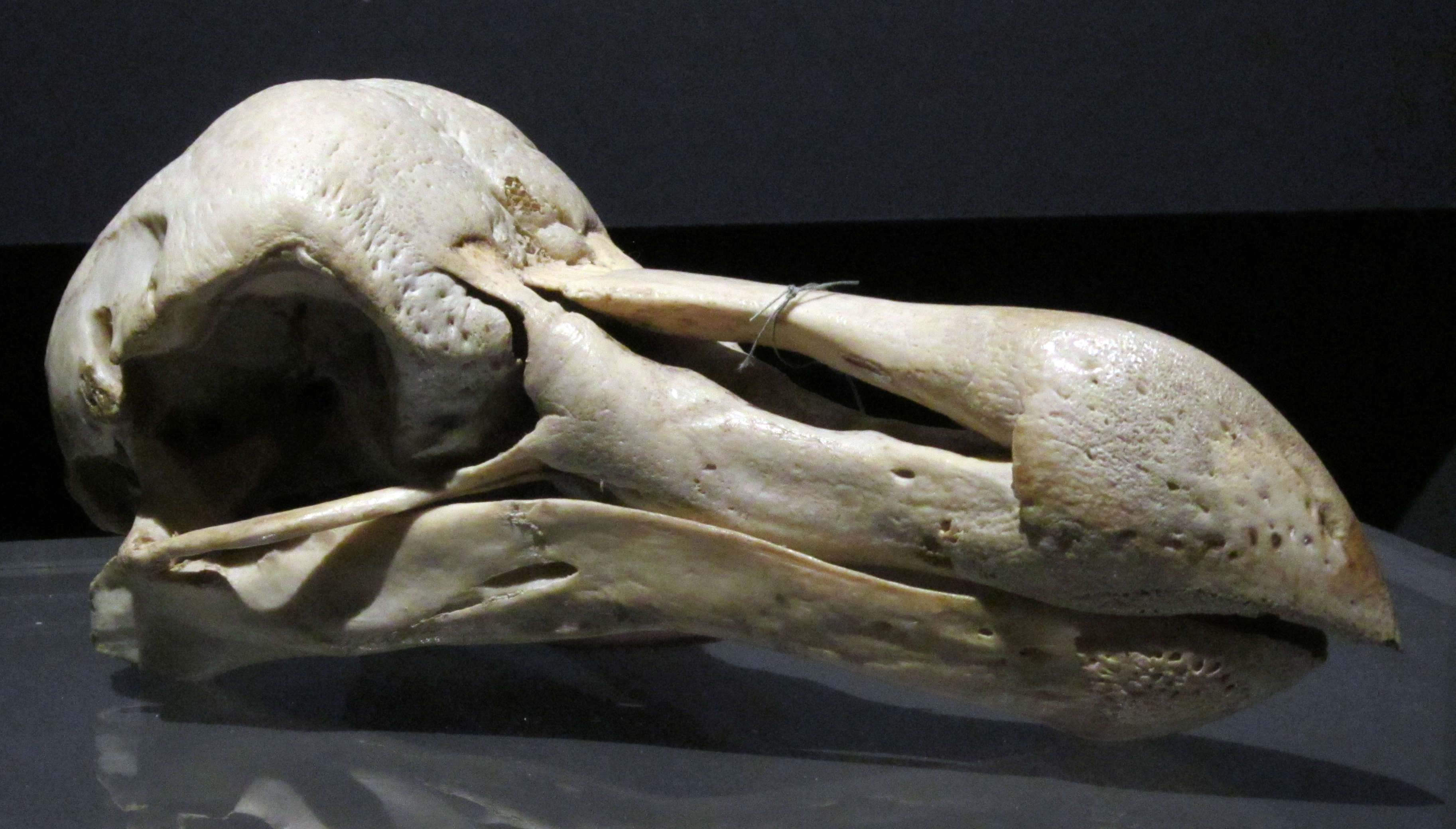|
East London Museum
East London Museum is a museum in East London, Eastern Cape, South Africa, notable for holding the type specimen of the coelacanth, a fish previously believed to be long extinct. It was the workplace of Marjorie Courtenay-Latimer, the fish's discoverer. It was established in 1921 and features natural and cultural history of East London and surrounds. The museum is open week days and Saturdays. There are other galleries within the museum besides the display of the coelacanth. The museum offers displays of southern Nguni beadwork and traditional culture. The maritime gallery includes model ships and shipwreck artifacts. The museum includes one living exhibit, a working bee hive. Gallery File:East London Museum, East London, Eastern Cape, South Africa (20511369615).jpg, alt=Display of Drury cast of the coelacanth, Display of Drury cast of the coelacanth File:East London Museum, East London, Eastern Cape, South Africa (20485185016).jpg, alt=Manta Ray, Manta Ray File:Dronte med ... [...More Info...] [...Related Items...] OR: [Wikipedia] [Google] [Baidu] |
East London, Eastern Cape
East London ( xh, eMonti; af, Oos-Londen) is a city on the southeast coast of South Africa in the Buffalo City Metropolitan Municipality of the Eastern Cape province. The city lies on the Indian Ocean coast, largely between the Buffalo River (Eastern Cape), Buffalo River and the Nahoon River, and hosts the country's only river port. , East London had a population of over 267,000 with over 755,000 in the metropolitan area. History Early history John Bailie, one of the 1820 Settlers, surveyed the Buffalo River (Eastern Cape), Buffalo River mouth and founded the town in 1836. There is a memorial on Signal Hill commemorating the event. The city formed around the only river port in South Africa and was originally known as Port Rex. Later it was renamed London in honour of the capital city of the United Kingdom, hence the name East London. This settlement on the West Bank was the nucleus of the town of East London, which was elevated to city status in 1914. During the early to mi ... [...More Info...] [...Related Items...] OR: [Wikipedia] [Google] [Baidu] |
Type Specimen
In biology, a type is a particular wiktionary:en:specimen, specimen (or in some cases a group of specimens) of an organism to which the scientific name of that organism is formally attached. In other words, a type is an example that serves to anchor or centralizes the defining features of that particular taxon. In older usage (pre-1900 in botany), a type was a taxon rather than a specimen. A taxon is a scientifically named grouping of organisms with other like organisms, a set (mathematics), set that includes some organisms and excludes others, based on a detailed published description (for example a species description) and on the provision of type material, which is usually available to scientists for examination in a major museum research collection, or similar institution. Type specimen According to a precise set of rules laid down in the International Code of Zoological Nomenclature (ICZN) and the International Code of Nomenclature for algae, fungi, and plants (ICN), the ... [...More Info...] [...Related Items...] OR: [Wikipedia] [Google] [Baidu] |
Coelacanth
The coelacanths ( ) are fish belonging to the order Actinistia that includes two extant species in the genus ''Latimeria'': the West Indian Ocean coelacanth (''Latimeria chalumnae''), primarily found near the Comoro Islands off the east coast of Africa, and the Indonesian coelacanth (''Latimeria menadoensis''). The name "coelacanth" originates from the Permian genus ''Coelacanthus'', which was the first scientifically named coelacanth. Coelacanths follow the oldest-known living lineage of Sarcopterygii (lobe-finned fish and tetrapods), which means they are more closely related to lungfish and tetrapods (which includes amphibians, reptiles, birds and mammals) than to ray-finned fish. They are found along the coastline of Indonesia and in the Indian Ocean. The West Indian Ocean coelacanth is a critically endangered species. The oldest known coelacanth fossils are over 410 million years old. Coelacanths were thought to have become extinct in the Late Cretaceous, around 66 m ... [...More Info...] [...Related Items...] OR: [Wikipedia] [Google] [Baidu] |
Marjorie Courtenay-Latimer
Marjorie Eileen Doris Courtenay-Latimer (24 February 190717 May 2004) was a South African museum official, who in 1938, brought to the attention of the world the existence of the coelacanth, a fish thought to have been extinct for 65 million years. Personal life Courtenay-Latimer was born in East London, South Africa. She was the daughter of a stationmaster for South African Railways. She was born two months prematurely and was sickly throughout her childhood, nearly dying on one occasion due to a diphtheria infection. Despite her frailty, from a young age she was an avid naturalist and enjoyed outdoor activities. When she visited her grandmother on the coast, she was fascinated by the lighthouse on Bird Island. At age eleven, she vowed she would become an expert on birds. After school, she trained to become a nurse at King William's Town but, just before finishing her training, she was alerted to a job opening at the recently opened East London Museum, East London, Eastern ... [...More Info...] [...Related Items...] OR: [Wikipedia] [Google] [Baidu] |
Dodo
The dodo (''Raphus cucullatus'') is an extinct flightless bird that was endemic to the island of Mauritius, which is east of Madagascar in the Indian Ocean. The dodo's closest genetic relative was the also-extinct Rodrigues solitaire. The two formed the subfamily Raphinae, a clade of extinct flightless birds that were a part of the family which includes pigeons and doves. The closest living relative of the dodo is the Nicobar pigeon. A white dodo was once thought to have existed on the nearby island of Réunion, but it is now believed that this assumption was merely confusion based on the also-extinct Réunion ibis and paintings of white dodos. Subfossil remains show the dodo was about tall and may have weighed in the wild. The dodo's appearance in life is evidenced only by drawings, paintings, and written accounts from the 17th century. Since these portraits vary considerably, and since only some of the illustrations are known to have been drawn from live specimens, ... [...More Info...] [...Related Items...] OR: [Wikipedia] [Google] [Baidu] |
Museums In The Eastern Cape
A museum ( ; plural museums or, rarely, musea) is a building or institution that cares for and displays a collection of artifacts and other objects of artistic, cultural, historical, or scientific importance. Many public museums make these items available for public viewing through exhibits that may be permanent or temporary. The largest museums are located in major cities throughout the world, while thousands of local museums exist in smaller cities, towns, and rural areas. Museums have varying aims, ranging from the conservation and documentation of their collection, serving researchers and specialists, to catering to the general public. The goal of serving researchers is not only scientific, but intended to serve the general public. There are many types of museums, including art museums, natural history museums, science museums, war museums, and children's museums. According to the International Council of Museums (ICOM), there are more than 55,000 museums in 202 countries ... [...More Info...] [...Related Items...] OR: [Wikipedia] [Google] [Baidu] |

.jpg)

